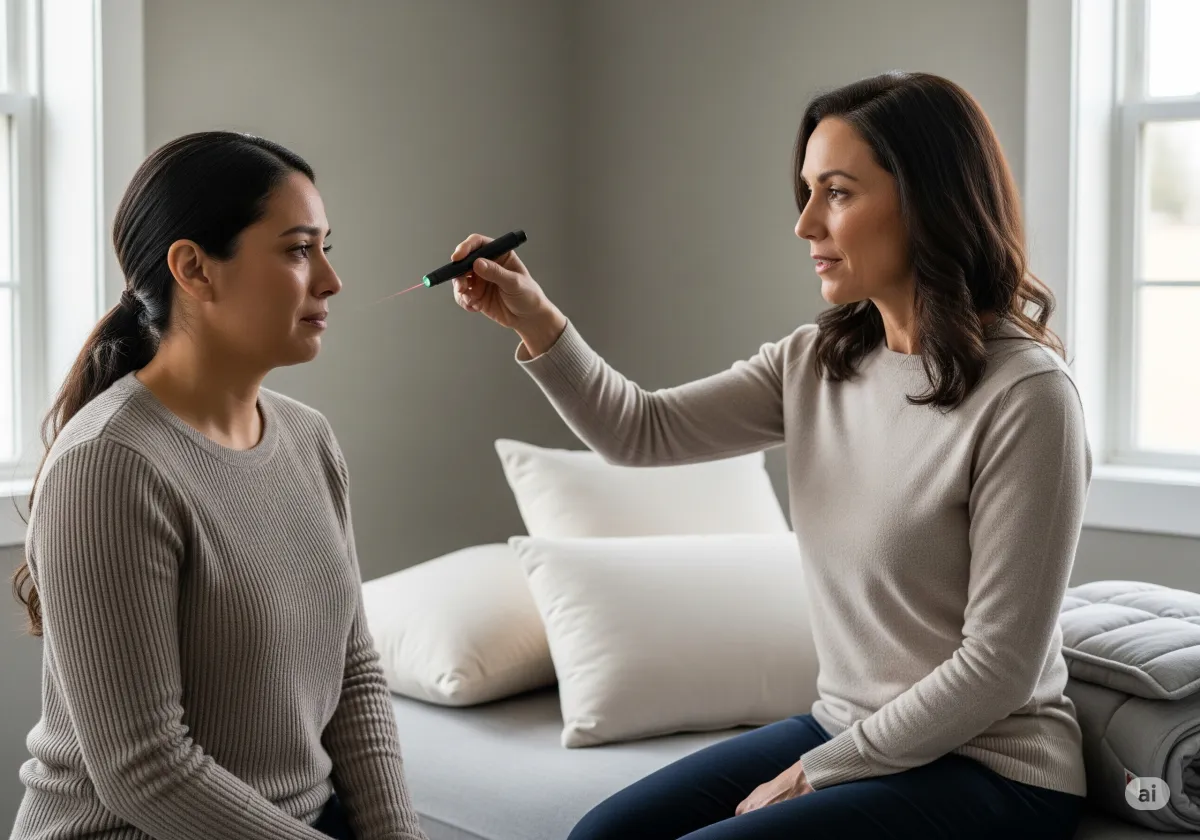Brainspotting Therapy

Brainspotting Therapy
Don't Let Your Thoughts Control Your Life
Sometimes our brain holds onto pain—even when we don’t realize it. Brainspotting is a powerful therapy that helps people heal from trauma and emotional struggles by finding the places where those feelings live in the body and the brain.
WHAT WE OFFER FOR YOU
At Cornerstone Wellness Center, brainspotting gives clients a gentle, focused way to process deep hurt and feel more calm, clear, and connected.
Why Brainspotting Is Used
Have you ever felt a strong emotion and didn’t know why?
Or found yourself reacting to something small in a really big way?
Brainspotting helps uncover the hidden spots where unprocessed memories, stress, or trauma are stored.
By focusing the eyes on a specific “brainspot” and staying present with the emotion, the brain can begin to release and heal that stuck energy.
It’s especially helpful for:
PTSD and unresolved trauma
Anxiety and panic
Grief or emotional numbness
Chronic pain or tension
Performance blocks (in sports, arts, or public speaking)
People who feel “stuck” even after trying other therapies
The Goal of Brainspotting Therapy
The goal is to help your body and brain process old pain that’s still affecting you. Brainspotting allows your mind to do the work without needing to talk about every detail.
A trained therapist helps you focus on a visual point that connects to the emotion, then gently guides you through what comes up—helping your nervous system settle and rewire.
It’s calm, quiet, and often deeply moving.
How Brainspotting Helps You Heal from the Inside Out
Brainspotting goes beyond words. It works with the body’s natural ability to heal—especially from things that are hard to talk about.
At Cornerstone Wellness Center, our certified brainspotting therapists create a safe, quiet space for your healing. If talk therapy hasn’t worked or you feel like something’s still stuck, brainspotting may be the key to real release.
A Simple Story:
Meet Eli
Eli is a 29-year-old firefighter. He’s always been strong and steady—but after a tough rescue call, he couldn’t sleep, had panic attacks, and avoided loud places. He didn’t want to talk about it and felt ashamed of needing help.
At Cornerstone Wellness Center, Eli was introduced to brainspotting. He didn’t have to share all the details—just notice where he felt tension and let his eyes land where it felt strongest.
With his therapist’s support, Eli processed the fear, guilt, and grief he had been carrying. After a few sessions, his sleep returned, the panic faded, and he began to feel more like himself.

Disclaimer
The story of “Eli” shared above is a fictional example created for educational purposes. It does not represent a real client or actual session at Cornerstone Wellness Center. We are fully committed to maintaining your privacy and confidentiality in accordance with HIPAA regulations. Any resemblance to real persons, living or deceased, is purely coincidental.
Frequently Asked Questions (FAQ)
What does “brainspotting” mean?
It’s a therapy technique where you focus your gaze on a certain spot that helps your brain access stored emotions or trauma—so it can process and release them.
Do I have to talk a lot during brainspotting?
Not at all. You can share as much or as little as you want. Much of the work happens inside your brain and body.
Is brainspotting like EMDR?
They’re similar in that they both help process trauma, but brainspotting is usually slower, gentler, and lets your body lead the way without needing constant eye movement.
How many sessions will I need?
It depends on what you’re working through. Some people feel better after a few sessions, while others use it as part of longer therapy.
Is brainspotting safe?
Yes, especially when done with a trained therapist. You stay in control, and the process is designed to help you feel grounded and supported.

Our clinic is a private mental health partnership, with a carefully selected team of Psychologists.
Compliance and Cybersecurity Provided by:
Home | About | Children | Adolescents | Individuals | Families | Business Programs
© 2025, Cornerstone Wellness Center. All rights reserved.
Made with ♥ In Las Vegas, NV by Megafluence, Inc.
Powering Thought Leaders Worldwide
https://megafluence.co













